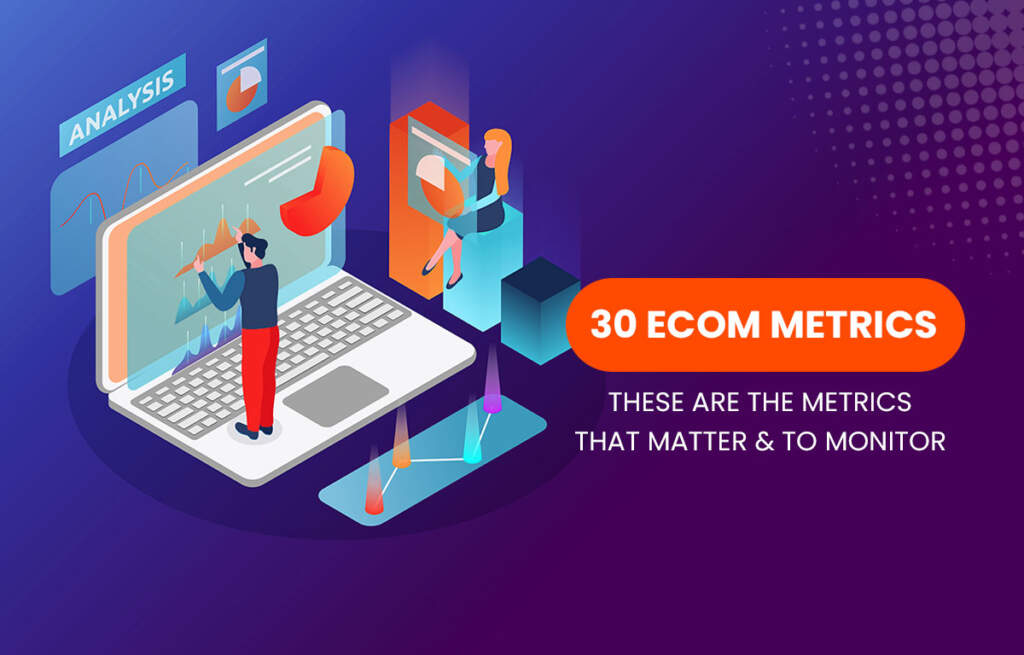Learn what makes a perfect product page (PDP). Discover the key elements of it, and see how to optimize your product pages for conversions.
Read More »

Small businesses and startups are expanding across various industries. However, one of the most rapidly growing industries is eCommerce. Due to its versatility and ability to reach customers in different parts of our world, people are turning to eCommerce to build their businesses and earn a living.
If you’re a beginner who wants to run your eCommerce company profitably, there are some important metrics to keep in mind. These help you understand if your business is moving in the right direction and if it is growing.
Let's have a look at some of the most important ones for ecommerce businesses.
Financial metrics refer to the overall business numbers. These give you an overview of how healthy a business is, whether it is profitable or not. Let us have a look at some of the most important metrics or key performance indicators (KPIs) you should be looking at.
Net revenue showcases how much a company earns as revenue after deducting the expenses from the total revenue earned. The formula for this is:
Net Revenue = Gross Revenue - Expenses
Besides your Gross Revenue, you must also look at where you’re getting different customers. Let’s say you have a few sources: Instagram, Google, and Mobile App Ads. You’ll determine how much revenue customers from each of these channels bring to your company. You can calculate this metric if your website is connected with Google Analytics.
Go to Google Analytics -> Acquisition Tab -> Channels
Revenue Per Session (RPS) refers to how much money you earn for every 1000 sessions of the customers. The formula:
RPS = (Revenues / Sessions) * 1000
Order and sales metrics refer to factors that portray how much money goes into expenses, how much margin you get, how many returns and refunds are processed, and more.
AOV (Average Order Value) helps you understand how much revenue a customer gives you on average when they purchase an item. The formula:
AOV = Revenue / Total Number of Orders
Thus, if your revenue is $20,000 and the number of orders is 50, the AOV is $400. On average, when a customer purchases something from your eCommerce website, the purchase value would be $400.
COGS refers to the cost incurred for selling the product. It includes all costs incurred to ensure a product is designed, created, and shipped to the customer. The formula:
COGS = Starting Inventory Worth + Purchased Inventory Worth - Closing Inventory Worth
Let’s say a company has an inventory of $30,000. Now, during the sales period, the organization bought $50,000 worth of inventory. Finally, once the sales were done, there was $10,000 worth of inventory left. Thus, the formula would be
COGS = $30,000 + $50,000 - $10,000 = $70,000
Gross Margin deduces how much profit a company makes. This is calculated by:
Gross Margin = Revenue - COGS
Return and Refund rates are critical metrics to monitor. You can derive several insights about the quality of the product, the quality of service, and more. One can deduce this with the below formula:
Return Rate = (Number of Returns / Total Number of Orders) x 100
Refund Rate = (Number of Refunds / Total Number of Orders) x 100
Inventory metrics are often neglected, but they are as important as others on the list. They help you understand how efficient you are with the process of purchasing new goods and selling them.
Inventory Turnover refers to the number of times an organization goes through the cycle of purchasing and selling stock in a year. The better the turnover, the more the business increases.
Inventory Turnover = COGS / Average Inventory
Average Inventory = (Number of Products at the Beginning / Number of Products at the End)
This refers to the amount of time elapsed between a customer placing an order and the shipping of the products takes place. This one is relatively easy to measure and doesn’t require a formula.
Lead Time refers to the time between a customer placing an order and receiving it. Like Time to Ship, this doesn’t require a formula and is easy to calculate. A longer time means a higher chance of bad customer experience.
Marketing metrics are extensive as they help you understand your different marketing strategies across various platforms. Although the metrics might vary from platform to platform, their overall purpose is similar.
Conversion Rates are a ratio of the number of people who purchased a product from you to the number of people who saw the advertisement.
Conversion Rate = (Number of Audience Turned Customers / Total Number of Audiences Who Saw the Ad)
This is to see if the amount spent on advertisements is fruitful. You’ll be able to understand how much you’re making if you expend a specific amount of money.
Return on Ad Spend = Conversion Value / Total Cost
Cost per Acquisition is a tricky metric to calculate as it differs between industries and strategies for marketing the products/services. The metric is influenced by factors such as the total amount spent on ads, the number of people who saw the ads, the number of people who made purchases through ads, and more.
This is one of the most fascinating metrics to look out for. From the total purchases, you must distinguish new customers from returning customers. Once you do so, you can take a ratio with the two factors and calculate the percentage of new customers V/S returning customers.
Website metrics help organizations derive several insights into customer behavior and even help them find patterns. These metrics include:
Besides this, you can also see the number of viewers on your website, where they are from, the number of sessions per viewer, and more.
Customer service metrics help you find gaps in your support infrastructure, improve it, and provide a better experience to users. A few common metrics to monitor are:
Thus, these are the top metrics you must look at as an eCommerce owner. They help you understand what is working, what’s not, and what is required for better business growth, customer satisfaction, and more.

With 20+ years in eCommerce and a proven history of scaling a 7-figure business, I know how to transform challenges into opportunities for growth. As the former Head of E-commerce for a European food tech company, I managed 14 e-shops across Europe and South Africa. Now, I specialise in helping professionals like you unlock the potential of AI automation for your business.
Over 1,800 students have already enrolled in my online courses to master these skills. Whether you’re looking for hands-on AI automation services or want to upskill with my courses, I’m here to help. Connect with me on LinkedIn to discuss your needs or join my programs to start building smarter, more scalable systems today!
Learn what makes a perfect product page (PDP). Discover the key elements of it, and see how to optimize your product pages for conversions.